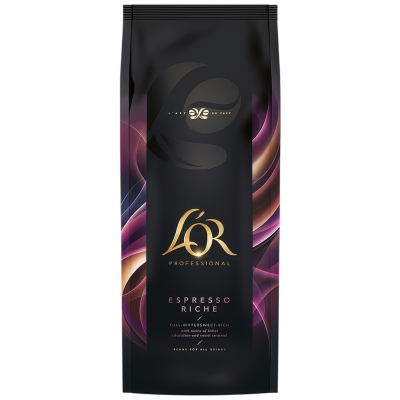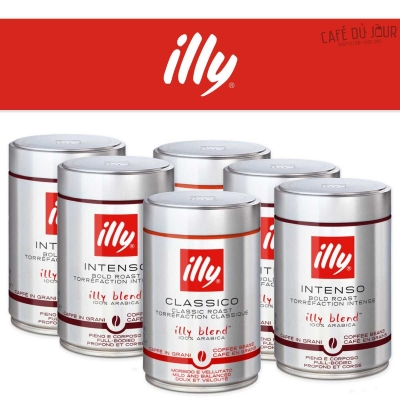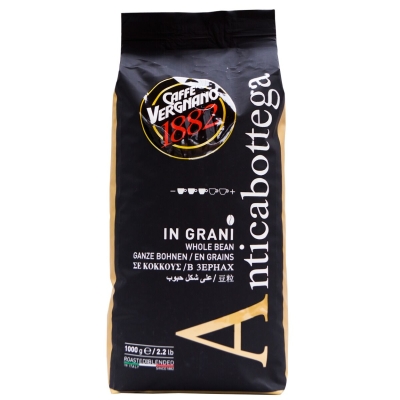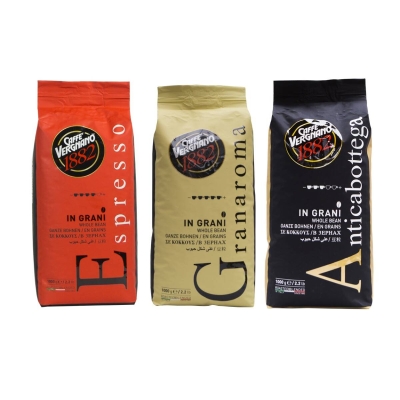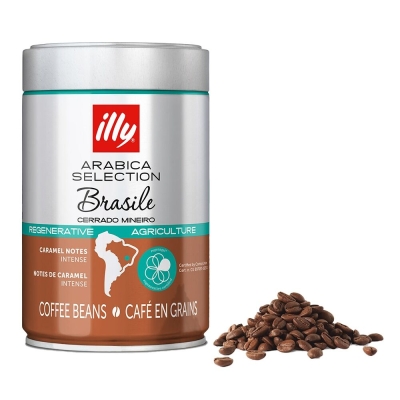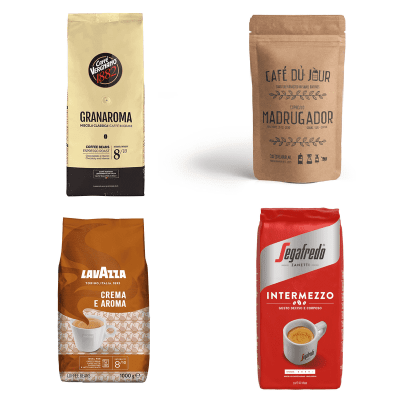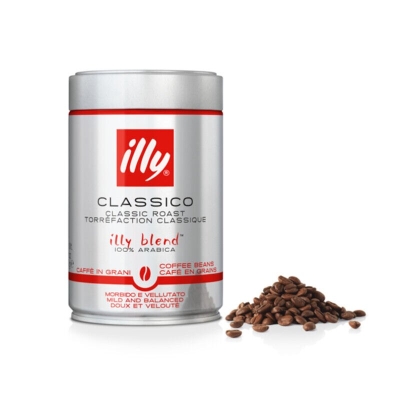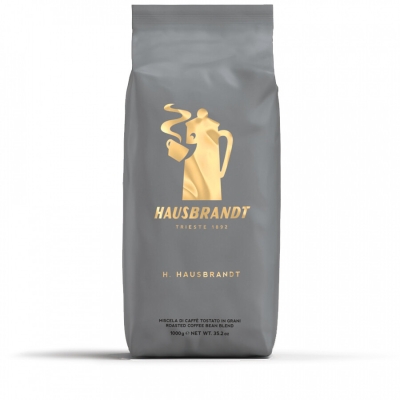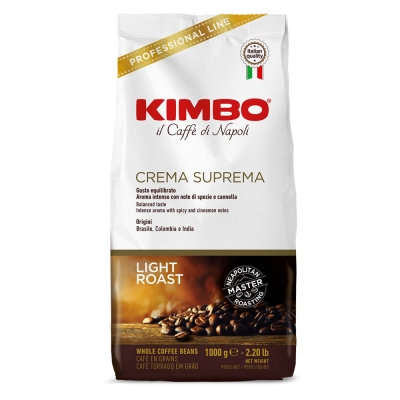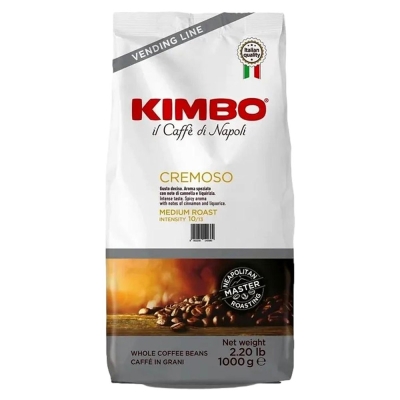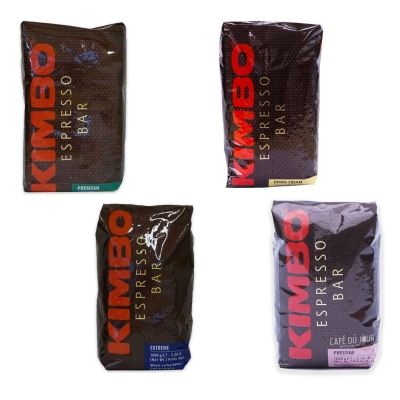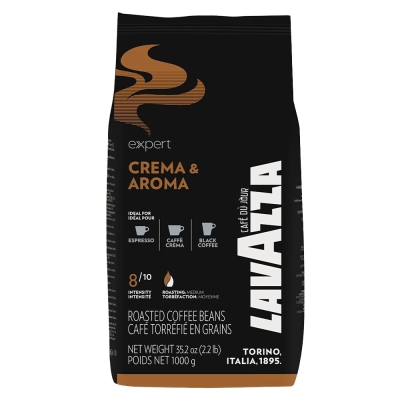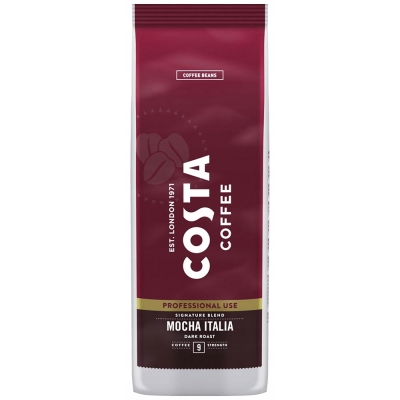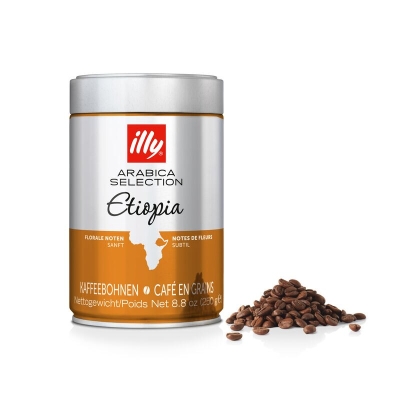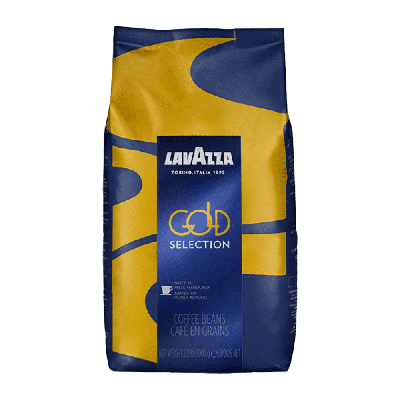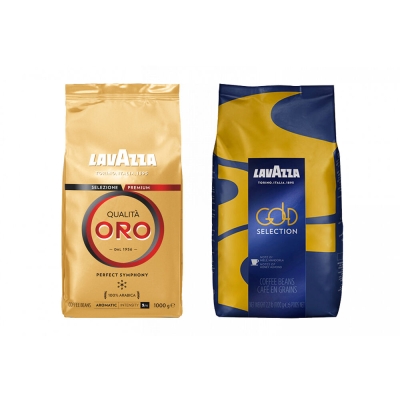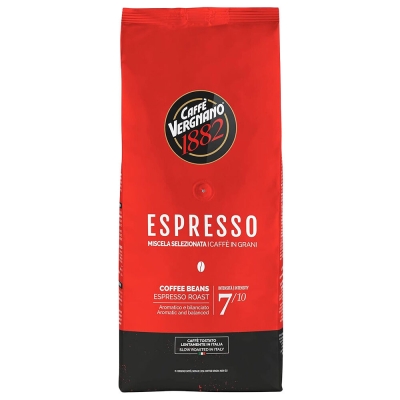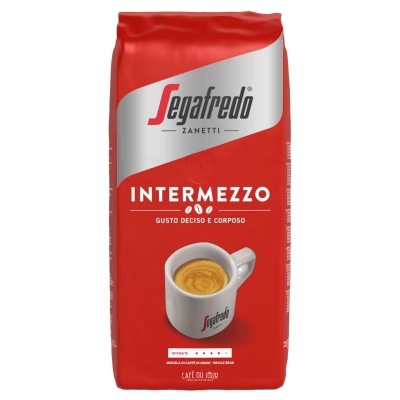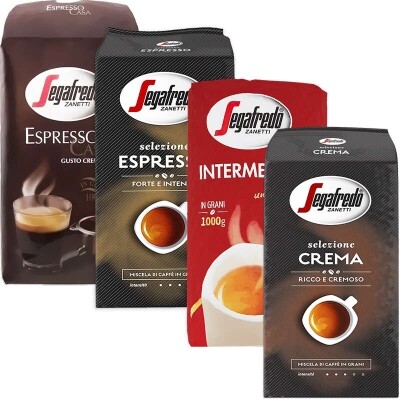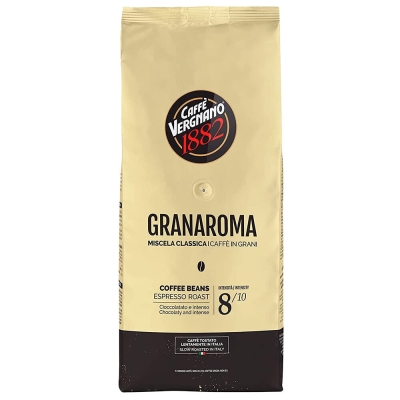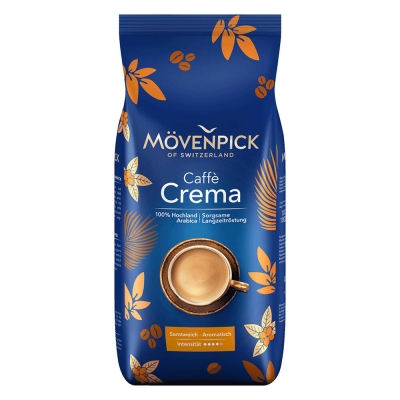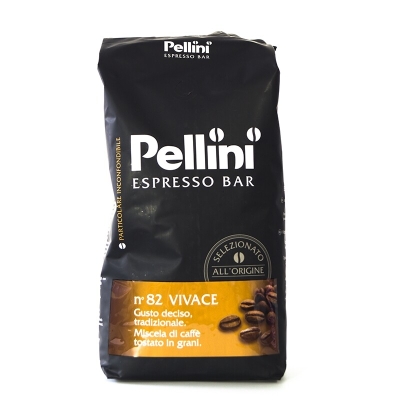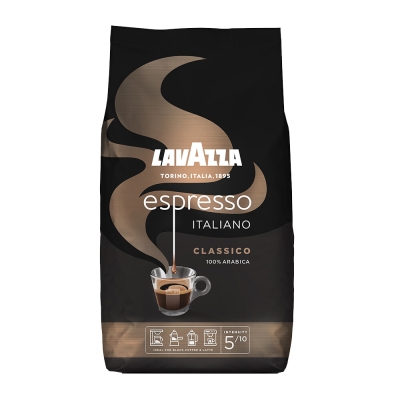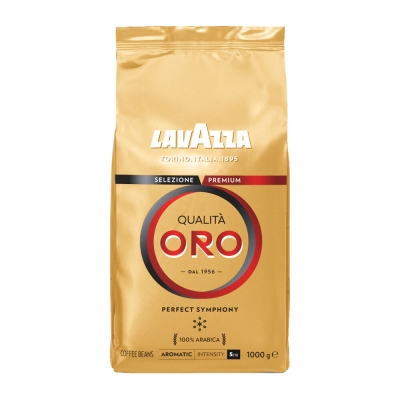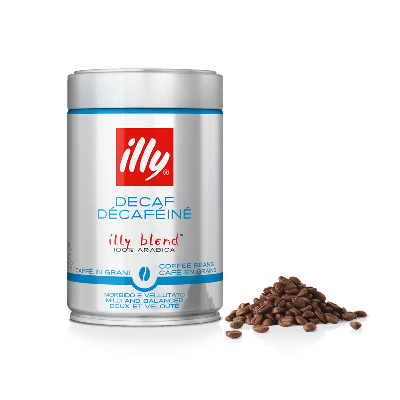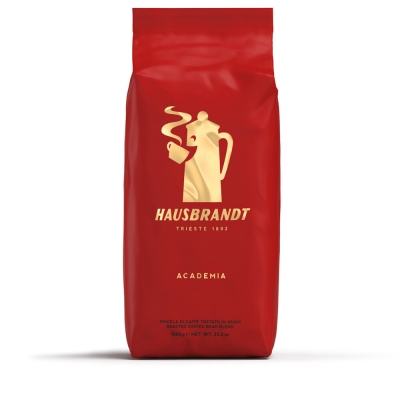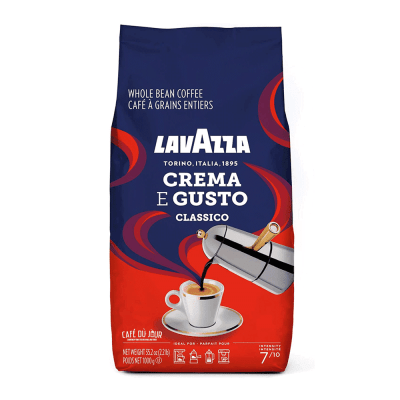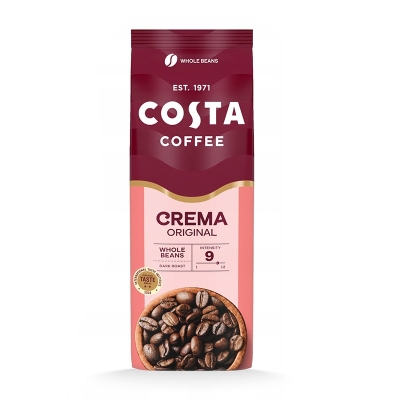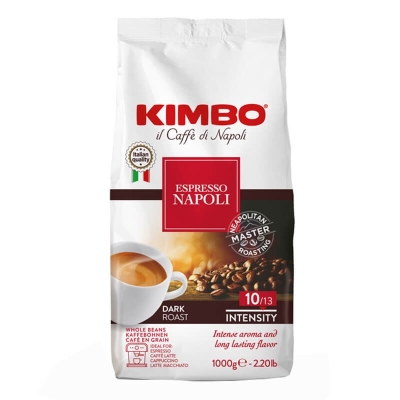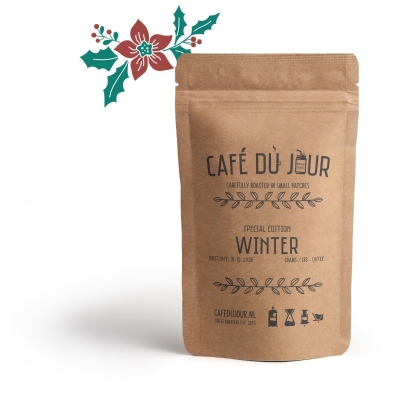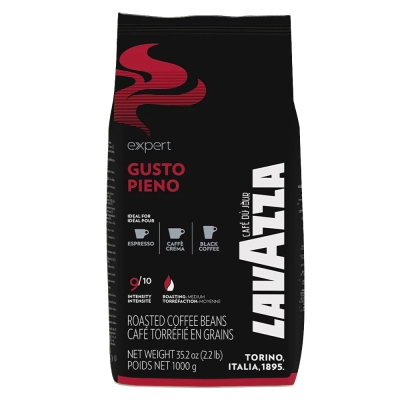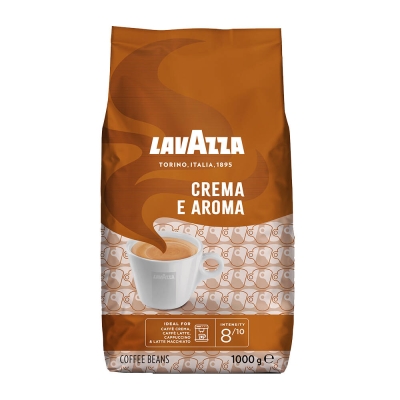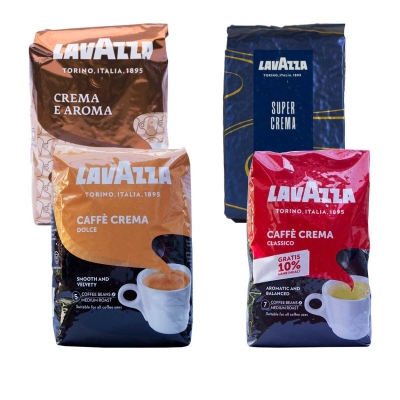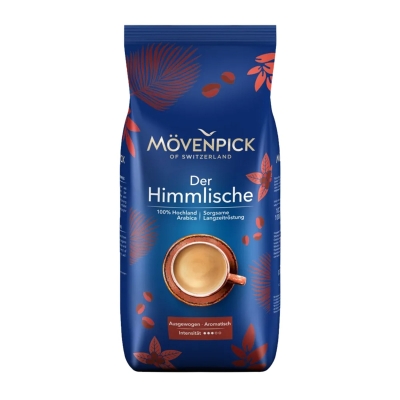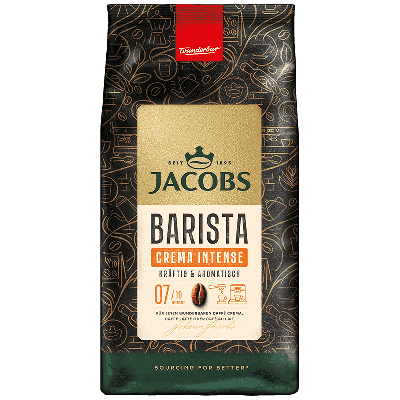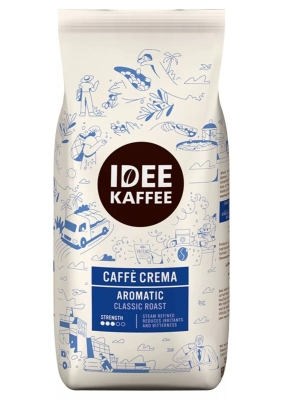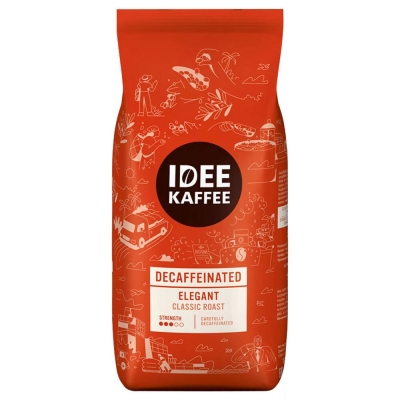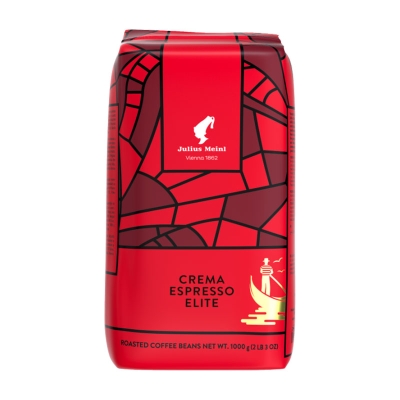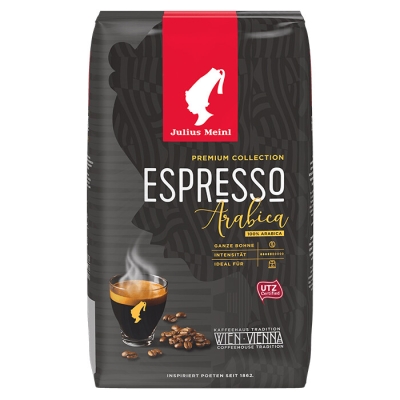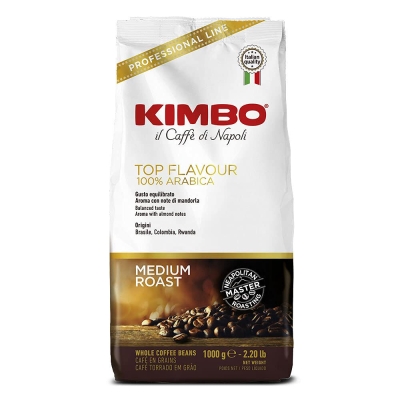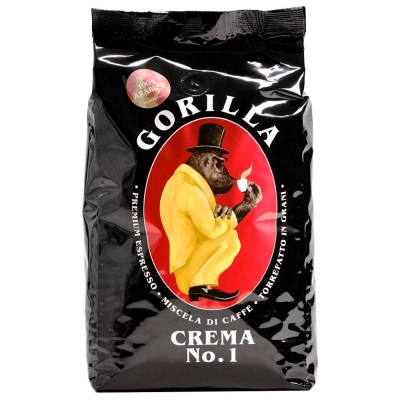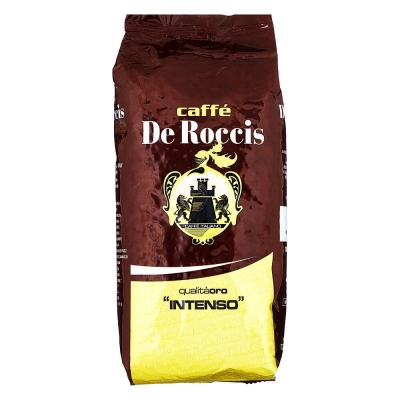Espresso coffee

- Caffè Vergnano 1882 Antica Bottega - coffee beans - 1 kiloChocolate, Fruity 5 - RegularAs low as 19.2119.21 / kg
- illy Arabica Selection Brazil Cerrado Mineiro - coffee beans - 250 gramsCaramel 8 - PowerfulAs low as 6.8927.56 / kg
- illy - Arabica Selection Colombia - coffee beans - 250gFloral, Fruity 7 - PowerfulAs low as 6.4825.92 / kg
- Hausbrandt H. Hausbrandt - Coffee beans - 1 kiloChocolate, Nutty, Caramel 8 - PowerfulAs low as 25.5925.59 / kg
- Kimbo Espresso Bar Extra Cream - coffee beans - 1 kiloChocolate, Nutty 10 - Very powerfulAs low as 17.2317.23 / kg
- Lavazza Expert Crema & Aroma - coffee beans - 1 kiloChocolate, Fruity 8 - PowerfulAs low as 19.7019.70 / kg
- Costa Coffee Professional Mocha Italia Dark Roast - coffee beans - 1 kiloChocolate 9 - Very powerfulAs low as 17.6417.64 / kg
- illy Arabica Selection Ethiopia - coffee beans - 250 gramsFloral, Fruity 8 - PowerfulAs low as 6.5226.08 / kg
- Lavazza Gold Selection - coffee beans -1 kiloHoney, Almonds 8 - PowerfulAs low as 24.0924.09 / kg
- Caffè Vergnano 1882 Espresso - Coffee beans - 1 kiloChocolate 7 - PowerfulAs low as 18.8018.80 / kg
- Segafredo Intermezzo - Coffee Beans - 1kgChocolate, Maple Syrup, Black Tea 8 - PowerfulAs low as 13.3813.38 / kg
- Caffè Vergnano 1882 Gran Aroma - coffee beans - 1 kiloChocolate 8 - PowerfulAs low as 18.6018.60 / kg
- Mövenpick caffè crema - coffee beans - 1 kiloChocolate, Nutty 6 - RegularAs low as 16.6316.62 / kg
- Pellini Espresso Bar No 82 Vivace - coffee beans - 1 kiloChocolate, Fruity 7 - PowerfulAs low as 16.0416.04 / kg
- Lavazza Caffe Espresso Italiano - coffee beans - 1 kiloFloral, Fruity 5 - RegularAs low as 25.7325.73 / kg
- illy Decaf - Coffee beans - 250 gramsFloral, Fruity, Nutty, Caramel 7 - PowerfulAs low as 6.5226.08 / kg
- Caffè Hausbrandt Academia - coffee beans - 1 kiloChocolate, Fruity, Nutty 7 - PowerfulAs low as 26.8826.88 / kg
- Lavazza Crema e Gusto Classico - coffee beans - 1 kiloChocolate, Spiced 7 - PowerfulAs low as 20.8520.85 / kg
- Costa Coffee Caffè Crema Original Blend - coffee beans - 1 kiloChocolate 9 - Very powerfulAs low as 17.9717.97 / kg
- Kimbo Barista Espresso Napoli / Napoletano - coffee beans - 1 kiloChocolate 10 - Very powerfulAs low as 17.6917.69 / kg
- Café du Jour Winter Coffee - Fresh Coffee BeansChocolate, Spiced, Nutty 7 - PowerfulAs low as 8.9519.95 / kg
- Lavazza Expert Gusto Pieno - coffee beans - 1 kiloChocolate, Caramel 9 - Very powerfulAs low as 17.9617.96 / kg
- Lavazza Crema e Aroma - coffee beans - 1 kiloChocolate, Nutty, Honey 8 - PowerfulAs low as 19.8919.89 / kg
- Café Intención Crema Aromatico - coffee beans - 1 kiloFloral, Fruity 6 - RegularAs low as 19.7419.74 / kg
- Mövenpick Der Himmlische - coffee beans - 1 kiloChocolate, Nutty 7 - PowerfulAs low as 17.1017.10 / kg
- Jacobs Barista Crema Intense - coffee beans - 1 kiloChocolate, Nutty 7 - PowerfulAs low as 16.5816.58 / kg
- Idee Kaffee Caffè Crema Aromatic - coffee beans - 1 kiloNutty 3 - RegularAs low as 16.8216.82 / kg
- Julius Meinl Crema Espresso Elite Italian Line - coffee beans - 1 kiloFloral, Chocolate 8 - PowerfulAs low as 23.1323.13 / kg
- Julius Meinl Espresso Premium Collection - coffee beans - 1 kiloChocolate, Fruity, Nutty 9 - Very powerfulAs low as 22.3022.30 / kg
- Kimbo Espresso Bar Top Flavour 100% arabica - coffee beans - 1 kiloNutty 8 - PowerfulAs low as 21.0721.07 / kg
- De Roccis Qualità Oro Intenso - coffee beans - 1 kiloChocolate, Nutty 9 - Very powerfulAs low as 11.2511.25 / kg
- Lucaffé 100% arabica Mister Exclusive - coffee beans - 1 kiloChocolate, Fruity, Nutty 7 - PowerfulAs low as 25.4725.47 / kg
Espresso Coffee
Coffee is one of the most popular beverages worldwide. It's delicious and comes in many varieties. Plus, coffee drinkers enjoy a caffeine boost. Every type of coffee is made from coffee beans. Regardless of the type you choose, the bean is the starting point of your drink. Those who value convenience often opt for filter coffee made from pre-ground beans. Some people prefer single-serve coffee made with a cup or pad for ease. However, for top-quality coffee, it's recommended to use fresh coffee beans and let your machine grind them. This way, all the flavors and aromas of the freshly ground beans are released into your cup. Espresso is the base for many different types of coffee.
Espresso coffee is among the most popular coffee drinks worldwide. With its strong and intense flavor, it's no wonder espresso is a favorite among coffee enthusiasts. Espresso is made by forcing hot water under high pressure through finely ground coffee, resulting in a small, but powerful, shot with an intense flavor. For those seeking even more intensity and caffeine, there's the double espresso, which combines two shots into a single drink. Both the classic espresso and the double espresso hold an important place in coffee culture, whether you're a fan of the classic version or just need an extra kick.
How Did Espresso Coffee Come Into Being?
The first coffee machine capable of brewing large quantities was invented around 1820. However, modern technology wasn't available then, so the process involved filtering water through the machine under high steam pressure. The downside was that the steam pressure burnt the ground coffee, giving it a very bitter taste. Steam can exceed 100° Celsius, whereas the ideal brewing temperature for espresso is up to 95° Celsius. Despite the bitterness, the new technology was embraced, and people countered the taste by adding lots of sugar. This steam-pressure technology persisted for many years until Italian inventor Luigi Bezzera introduced a new type of steam pressure machine that prevented coffee from contacting the steam. This innovation allowed for making coffee per cup, also known as express, or in Latin, exprimere, meaning "to press out." Thus, espresso was born. From that time onwards, especially in Italy, various coffee factories emerged, each with its own espresso, but still using steam-pressure machines. It wasn't until 1938 that Professor Illy developed a new machine based on air pressure. Although it has been significantly modernised and now runs on electricity, this machine's concept is still in use today.
How Is Espresso Coffee Drunk?
Espresso is seen as Italy's national drink, which is why many espresso derivatives carry Italian names. In Italy, it's simply called caffè. It's consumed from morning till late at night, often in its derivative forms like cappuccino. For a proper espresso, you need an espresso cup, a small cup that's sometimes tricky to hold with just two fingers. Preheat this cup, and then brew the coffee under the right pressure and temperature. Only then can it truly be called espresso coffee. The drink should be black, hot, and ideally with a couple of teaspoons of sugar for sweetness. This is considered the correct way. Of course, taste varies; some people prefer it with sugar, while others don't. Enjoying an espresso made the right way will surely give you the authentic Italian experience.
Variations of Espresso Coffee
Espresso may be too strong and intense for some, and many people prefer coffee with milk to soften the bitterness. That's why various espresso-based drinks exist, some without milk or foam and others with milk or foam, but always grounded in espresso:
Caffè Doppio
Doppio is simply double the amount of espresso. Given the small quantity of a single espresso shot, some may find doppio more satisfying.
Caffè Lungo
This version uses more water and resembles the coffee most people are accustomed to. It's less strong but offers a fuller cup.
Caffè Corretto
This is "corrected" coffee, where a shot of espresso is topped with a little liquor, like grappa, sambuca, or brandy. In northern Italy, grappa is common, while in the south, anise is often added.
Caffè Ristretto
In contrast to lungo, ristretto uses less water, giving a more concentrated flavor.
Caffè Americano
If lungo isn’t similar enough to regular coffee for you, try an Americano. Extra hot water is added to the espresso, making it quite comparable to filter coffee.
Caffè Macchiato
This drink consists of a layer of espresso topped with a dash of hot milk, then a layer of frothed milk. Ideally served in a glass to show the layers. In Dutch, it's known as "spotted coffee."
Cappuccino
Very popular in both the Netherlands and Italy, especially in the morning. A cappuccino is a mix of equal parts espresso, steamed milk, and milk foam, often garnished with cocoa powder or cinnamon.
Caffè Latte
This is espresso with more hot milk than coffee. It's also the canvas for artistic baristas creating latte art. With a caffè latte, the coffee is poured first, followed by the hot milk.
Latte Macchiato
Different from a caffè macchiato, this one uses only hot milk without foamed milk. Unlike caffè latte, here the milk is poured first, then the espresso. The milk is the star of the show.
Buy Espresso
Do you fancy making your own authentic espresso or any of the variations mentioned above? Visit the Café du Jour website to order special coffee beans for a delightful cup of espresso.













